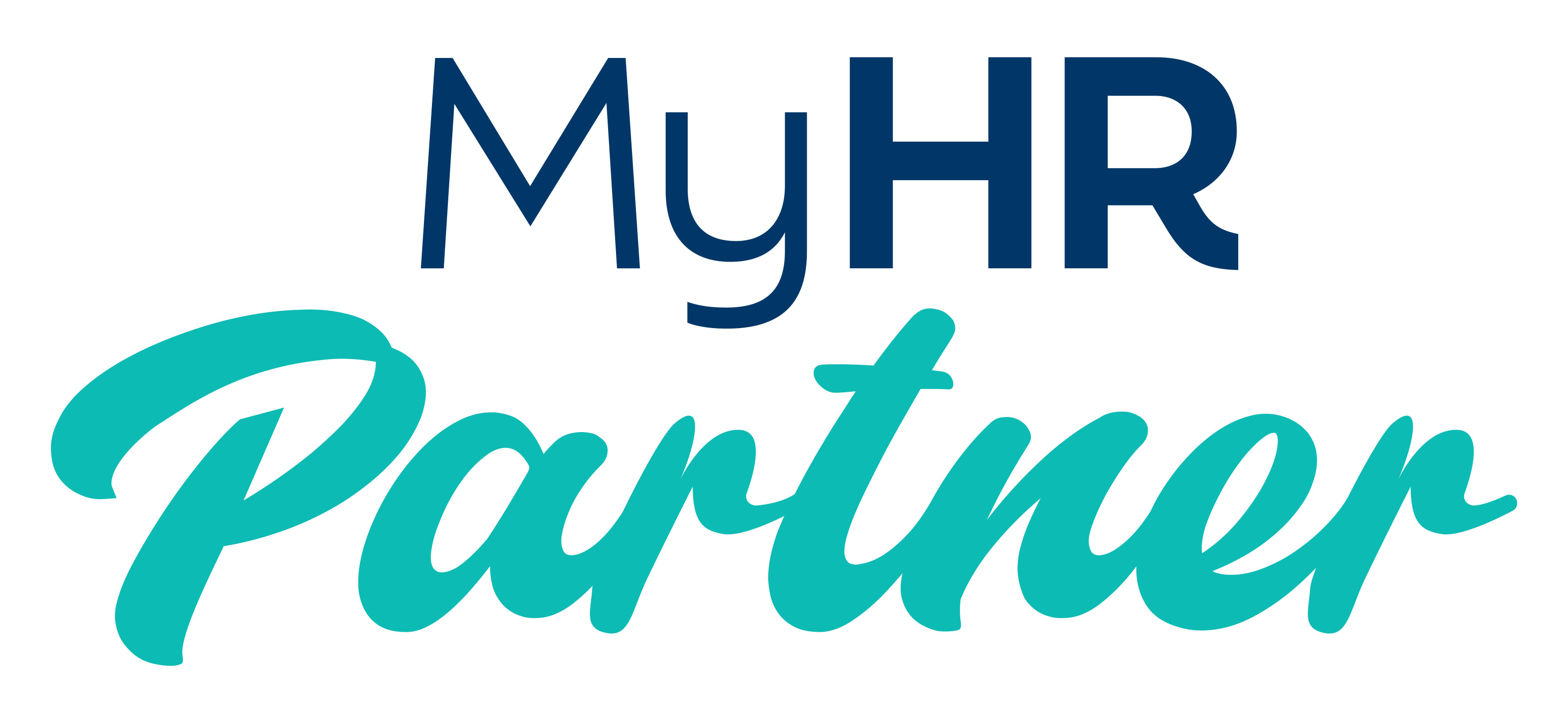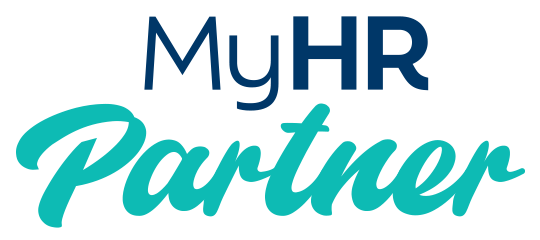Your all-in-one HR toolkit — built for busy Australian small businesses.
When you’re managing your team, the last thing you need is to waste time googling “Fair Work templates” or wondering if you’ve got the latest version of an award or the correct pay rates.
The My HR Partner HR Hub gives you everything you need to manage your people confidently — all in one easy, trusted place.
WHY BUSINESS OWNERS LOVE IT
Saves you hours every week.
No more starting from scratch — get instant access to templates, checklists and guides that are ready to use.
Keeps you compliant.
Every resource is up to date with Fair Work, Award pay guides and the latest legislation.
Reduces stress.
You’ll know exactly where to find what you need — and what to do next.
Includes real-world support.
Join Q&A sessions, webinars and masterclasses with Karen Hillen, your HR partner who actually understands small business life.
Why go searching the web for HR
answers, when you can save time and
money with all your HR resources in
one convenient place.
With the My HR Partner HR Hub,
you can access a wide range of tools
and resources to make managing your
HR responsibilities easier than
ever before.
Discover exactly how to respond
to HR challenges in your business with
our HR Hub Membership. You’ll have
access to our invaluable resources 24/7
and the opportunity to tap into
support from Karen via our Q&A
sessions, master classes & webinars.

Discover exactly how to respond to HR challenges in your business with our HR Hub Membership.
You’ll have access to our invaluable resources 24/7 AND the opportunity to tap into support from Karen via email, Q&A sessions, masterclasses & webinars.
RECRUITMENT
PAYROLL & COMPLIANCE
LEAVE
EMPLOYEE PERFORMANCE
ENDING EMPLOYMENT
HEALTH & SAFETY
What’s inside
Your membership gives you unlimited access to:
Current award links, pay guides, and Fair Work statements.
Practical templates and checklists for recruitment, onboarding, payroll, leave, compliance, performance, ending employment, and safety.
Info sheets and quick-reference guides written in plain English.
Email support for when you need a nudge in the right direction.
Access to every member-only webinar and Q&A replay so you never miss a thing.
The result
No more guesswork. No more frantic late-night Googling.
Just clear, compliant HR guidance — ready whenever you are.
Join the My HR Partner HR Hub
Gain confidence, save time, and manage your team with ease.
Your HR answers are waiting — all in one trusted place.
Our HR Hub Membership also
includes up to date links to awards,
award pay guides, Fair Work Information Statement, Casual Employment
Information Statement, and much more.
Plus, our templates, checklists, and
info sheets cover a range of subjects
to help you manage your team effectively
in areas such as recruitment, payroll
and compliance, leave, employee
performance, ending employment,
and health and safety.
Our Membership offers access
to the resources you need to manage
your team effectively.
$697 / Year
HR questions answered by email
Monthly Q&A sessions
Employee Onboarding Hub
20% discount on HR advice calls
20% discount on employment contracts
20% discount on all other HR services
Plus access to these resources:
• Videos
• Webinars
• HR Template Library
• HR Checklist Library
• HR information
$197 / Quarter
HR questions answered by email
Monthly Q&A sessions
Onboarding Hub not included
20% discount on HR advice calls
20% discount on employment contracts
20% discount on all other HR services
Plus access to these resources:
• Videos
• Webinars
• HR Template Library
• HR Checklist Library
• HR information
WHAT IS INCLUDED IN THE PAID HR HUB?
Monthly subscription inclusion
Direct email HR advice providing quick & easy solutions for straightforward HR questions - a convenient way to get timely expert guidance on matters that aren't too complex. (Limits apply)
Over 60 templates & checklists to help you with payroll & compliance, leave, termination of employment, managing performance, recruitment and health & safety.
Yearly subscription inclusion
Direct email HR advice providing quick & easy solutions for straightforward HR questions - a convenient way to get timely expert guidance on matters that aren't too complex. (Limits apply)
Over 60 templates & checklists to help you with payroll & compliance, leave, termination of employment, managing performance, recruitment and health & safety.
Employee Onboarding Hub - send your contracts and policies online and also integrates with Xero so employee details can be uploaded directly from the information entered by the employee.
WHAT QUESTIONS CAN I ASK IN THE Q&A SESSIONS?
You can ask any HR related questions that need a general answer. If the question is too indepth or is very specific to your business, you may need to book in for one of our discounted HR calls.
WHAT IS THE EMPLOYEE ONBOARDING HUB?
The Employee Onboarding Hub is a platform where you can send your employees their employment contract and they enter all of their details including their payroll information such as their bank account details, Tax File Number declaration and their Superannuation account details.
It integrates with Xero, MYOB and Deputy so it saves you time on data entry.
You can also save employees’ certificates, licences and set reminders for expiry dates.
ARE THE Q&A SESSIONS RECORDED?
No, the Q&A sessions aren't recorded.
HOW DO I GET THE DISCOUNTED HR CALLS, EMPLOYMENT CONTRACTS AND HR POLICIES?
You can order your discounted documents with your special member’s link.

WHAT OTHER RESOURCES ARE IN THE HR HUB?
Webinars, Master Classes & Q& A Sessions
Links to: Awards ~ Award pay guides ~ Fair Work Information Statement ~ Casual Employment Information Statement ~ & more
Templates, checklists and Info Sheets to give you information about a range of subjects to help you manage your
team in relation to:
Recruitment ~ Payroll & Compliance ~ Leave ~ Employee Performance ~ Ending Employment ~ Health & Safety
Our Latest Blog Post

Flexible Work - The Questions Every Small Business Owner are Asking
Flexible Work - The Questions Every Small Business Owner are Asking
“How do I balance remote and hybrid work expectations with productivity and accountability?”
It’s the HR challenge of the moment.
Staff want flexibility.
Employers want results.
There is a possibility saying no to flexibility could mean saying goodbye to good people. Of course, there are some positions where flexible working and working from home is just not possible.
This guide is written for small business owners in Australia who are wrestling with this balance.
Why Hybrid Work Matters Now
Employee demand: Flexibility is now seen as a standard benefit, not a perk.
Retention and attraction: Workers are more likely to join or stay with businesses that offer hybrid options.
Productivity potential: When managed well, remote work can actually increase focus and reduce burnout.
But too much flexibility without structure might cause communication breakdowns, accountability issues, and can affect team culture. So having the right systems and structure in place is important.
Setting the Right Guardrails
Every business will find its own balance, and of course there are businesses where a hybrid model won’t work. Like everything in HR, the key is communication, clarity and consistency.
Here’s some guidance on what can work:
1. Define Expectations Clearly
Create a hybrid work/flexibility policy. It doesn’t have to be long, one or two pages covering things like which roles are eligible, how many days employees can work remotely, and expectations around availability.
Be clear on when the team needs to be together in the office (e.g. Mondays for planning, Thursdays for client meetings).
2. Focus on Output, Not Hours
It may be an option to measure work by results achieved, not by how many hours someone’s online.
Agree on KPIs or milestones that matter to the role — projects delivered, clients served, sales achieved.
3. Keep Communication Human
Use simple tools but set communication expectations: response times, meeting etiquette, and which channels to use for what.
Encourage regular check-ins that feel like support, not surveillance.
4. Protect Team Culture
Bring the team together regularly even if it’s just one or two days a week. Each business will be different.
Invest in small rituals that make people feel part of something (check in meetings at the beginning of the week, shared lunches, team get togethers, end-of-week wins).
5. Support Wellbeing
Hybrid can blur boundaries. Encourage people to actually switch off. For example, don't set up an expectation that an employee is still logged on or available outside of their working hours.
Model healthy behaviour: if you respect the Right to Disconnect, your team will too.
Quick Wins for Small Business Owners
Start with a pilot: test a 2 to 3 month hybrid setup and review. Make it clear that it's a trial.
Ask your team for input. Often, they’ll suggest practical compromises.
Document your policy so everyone knows the rules.
“What is the best hybrid work model for small businesses?” → The best model is one that balances flexibility with clear expectations, focusing on outputs rather than hours. And the best model is going to be the one that works for your business.
“How do I manage remote work productivity?” → Set clear KPIs, use regular check-ins, and build trust instead of relying on micromanagement tools.
“Do I need a hybrid work policy in Australia?” → Yes. Even a simple one-page policy helps set expectations, reduce risk, and comply with Fair Work guidance.
Final Word
Hybrid or flexible work doesn’t have to be a headache. With a clear policy, a focus on results, and a human approach to culture, businesses in Australia can enjoy the best of both worlds - flexibility for staff, productivity for the business.
👉 Next step: Need a tailored hybrid work policy for your business? My HR Partner can help you draft one that fits your size, industry, and compliance needs.
We provide HR advice and support. We have trusted partners to assist with any employment law issues
outside of our scope.
More info

Get HR Advice from our HR expert
Our Latest Blog Post

Flexible Work - The Questions Every Small Business Owner are Asking
Flexible Work - The Questions Every Small Business Owner are Asking
“How do I balance remote and hybrid work expectations with productivity and accountability?”
It’s the HR challenge of the moment.
Staff want flexibility.
Employers want results.
There is a possibility saying no to flexibility could mean saying goodbye to good people. Of course, there are some positions where flexible working and working from home is just not possible.
This guide is written for small business owners in Australia who are wrestling with this balance.
Why Hybrid Work Matters Now
Employee demand: Flexibility is now seen as a standard benefit, not a perk.
Retention and attraction: Workers are more likely to join or stay with businesses that offer hybrid options.
Productivity potential: When managed well, remote work can actually increase focus and reduce burnout.
But too much flexibility without structure might cause communication breakdowns, accountability issues, and can affect team culture. So having the right systems and structure in place is important.
Setting the Right Guardrails
Every business will find its own balance, and of course there are businesses where a hybrid model won’t work. Like everything in HR, the key is communication, clarity and consistency.
Here’s some guidance on what can work:
1. Define Expectations Clearly
Create a hybrid work/flexibility policy. It doesn’t have to be long, one or two pages covering things like which roles are eligible, how many days employees can work remotely, and expectations around availability.
Be clear on when the team needs to be together in the office (e.g. Mondays for planning, Thursdays for client meetings).
2. Focus on Output, Not Hours
It may be an option to measure work by results achieved, not by how many hours someone’s online.
Agree on KPIs or milestones that matter to the role — projects delivered, clients served, sales achieved.
3. Keep Communication Human
Use simple tools but set communication expectations: response times, meeting etiquette, and which channels to use for what.
Encourage regular check-ins that feel like support, not surveillance.
4. Protect Team Culture
Bring the team together regularly even if it’s just one or two days a week. Each business will be different.
Invest in small rituals that make people feel part of something (check in meetings at the beginning of the week, shared lunches, team get togethers, end-of-week wins).
5. Support Wellbeing
Hybrid can blur boundaries. Encourage people to actually switch off. For example, don't set up an expectation that an employee is still logged on or available outside of their working hours.
Model healthy behaviour: if you respect the Right to Disconnect, your team will too.
Quick Wins for Small Business Owners
Start with a pilot: test a 2 to 3 month hybrid setup and review. Make it clear that it's a trial.
Ask your team for input. Often, they’ll suggest practical compromises.
Document your policy so everyone knows the rules.
“What is the best hybrid work model for small businesses?” → The best model is one that balances flexibility with clear expectations, focusing on outputs rather than hours. And the best model is going to be the one that works for your business.
“How do I manage remote work productivity?” → Set clear KPIs, use regular check-ins, and build trust instead of relying on micromanagement tools.
“Do I need a hybrid work policy in Australia?” → Yes. Even a simple one-page policy helps set expectations, reduce risk, and comply with Fair Work guidance.
Final Word
Hybrid or flexible work doesn’t have to be a headache. With a clear policy, a focus on results, and a human approach to culture, businesses in Australia can enjoy the best of both worlds - flexibility for staff, productivity for the business.
👉 Next step: Need a tailored hybrid work policy for your business? My HR Partner can help you draft one that fits your size, industry, and compliance needs.
We provide HR advice and support.
We have trusted partners to assist with
any employment law issues outside
of our scope.
More info
PO Box 1079
Coolangatta QLD 4225
ABN 30 644 527 015
Get HR Advice from our HR expert








